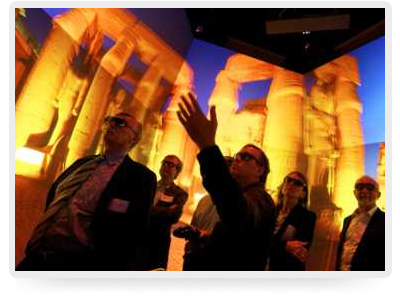The data collections associated with the Center for Cyber-Archaeology and Sustainability include a wide range of material and emphasis, ranging from data collected at the Khirbat en-Nahas dig, to 3-D stereographic reproductions of Luxor and Karnak. These collections are free and open to the public to view and download. More collections will be added.

Khirbat en-Nahas Project (Jordan)
This study of Iron Age state formation in southern Jordan is deeply rooted in three conceptual frameworks: a) general anthropological theory concerning processes of secondary state formation and the evolution of social power, b) historical models concerning the Iron Age based on Anthropology, Biblical and extra-Biblical sources, and c) Middle Range theory that aims at linking raw archaeological data with more complex generalizations and conclusions about the past based on the hard archaeological evidence retrieved from the excavations. Fundamentally, the research was a response to the unsolved problem of who controlled metal production at this key Levantine site during the Iron Age, a period that follows the collapse of many of the Late Bronze Age civilizations in the eastern Mediterranean region.
+ Read More

CAVEcam Virtual Reality Photography Collection
Digital cameras are used to capture images in full stereo surround for use in virtual reality systems. These images can cover any field of view, including 360° by 180° spherical panoramas. Two photographic cylinders are created with identical dimensions, capturing the perspective as seen from each eye position. When these cylinders are mapped to a spherical surface, full stereo in all directions is achieved. This technique allows photographic imaging to create the virtual environment itself. The complete stereo image that is created by this technique can be viewed in any direction that is supported by the virtual reality system design.
+ Read More

